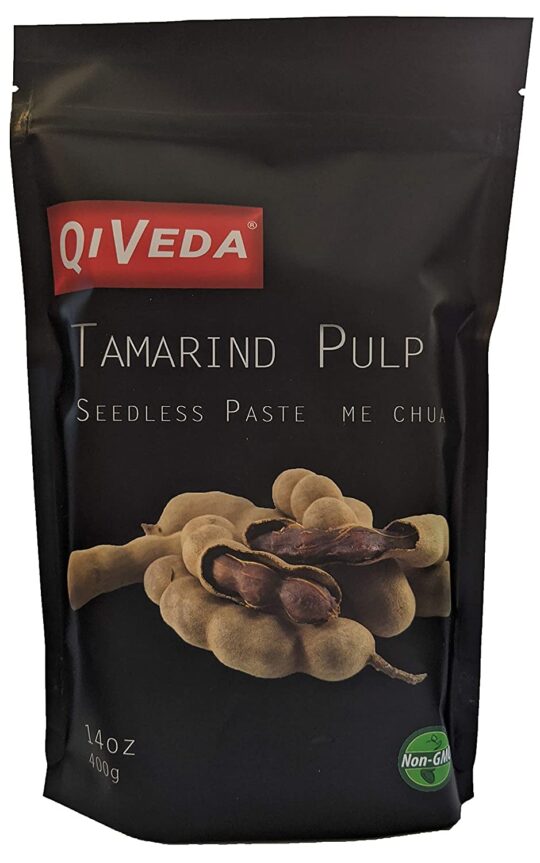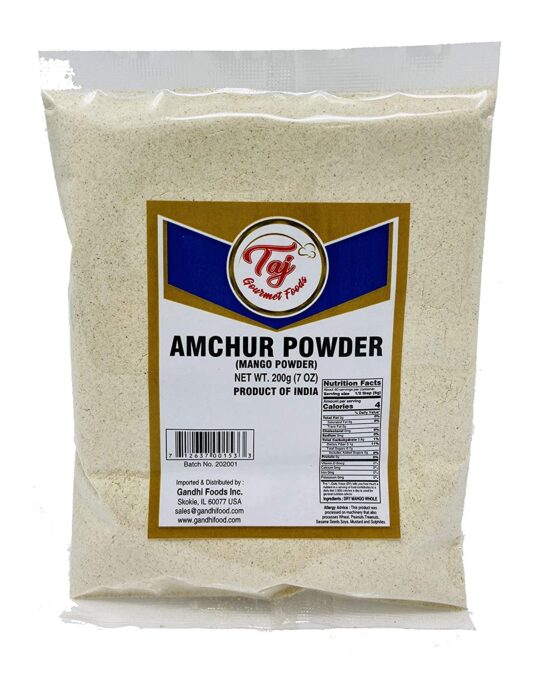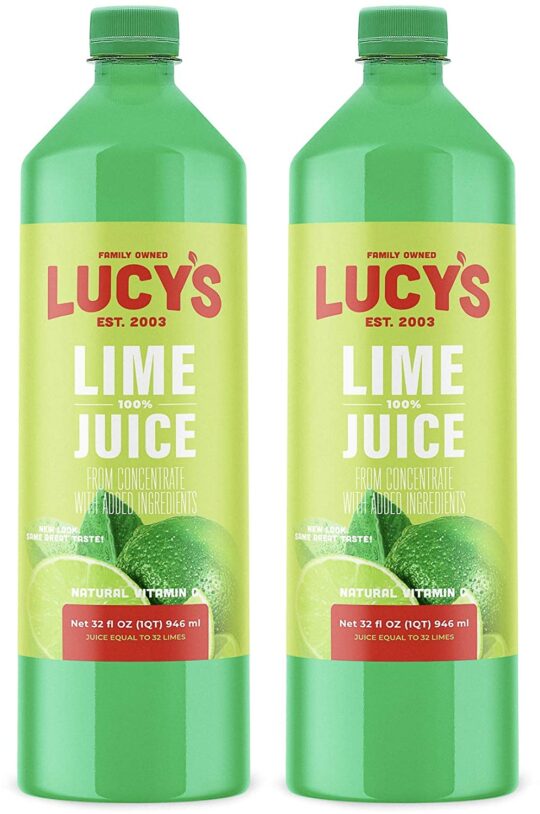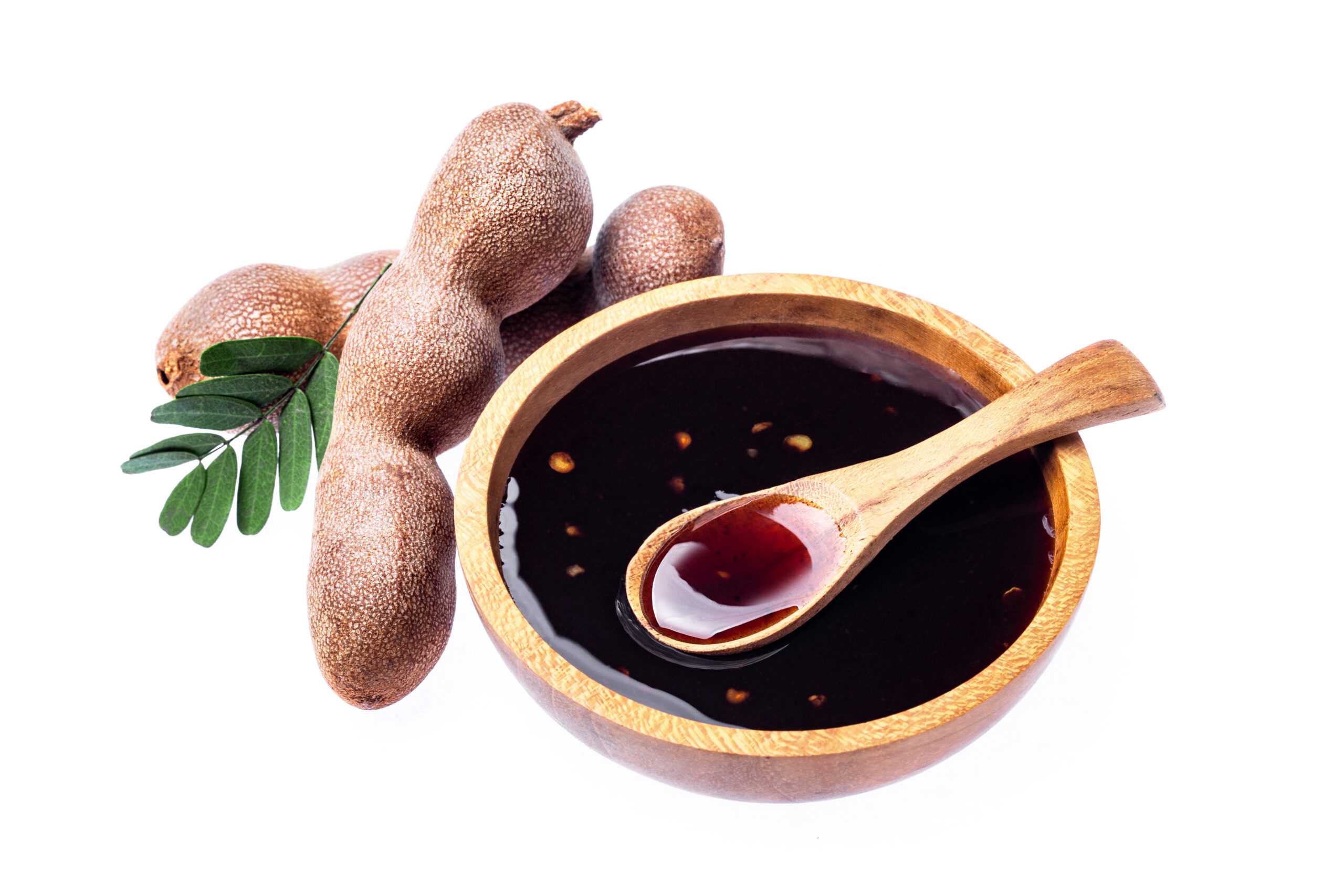Updated on April 9th, 2023
Tamarind is a versatile ingredient used in cooking to heighten the flavors of both sweet and savory dishes. It comes from the tamarind tree and is enveloped in seed pods that have a date-like texture and are crushed to make tamarind sauce or tamarind concentrate. The fruit can also be gotten from fresh pods or bought in chunks, and the sauce is a staple in the Caribbean, India, Thailand, and Mexico cuisines.
Once tamarind fruit is removed from the pod, the sticky pulp is separated from the tamarind seeds. The raw fruit is then left in hot water for thirty minutes and strained through a sieve to remove fibrous threads. While some cuisines use tamarind sauce to make desserts and candy, it’s commonly used in savory dishes in Thai cooking.
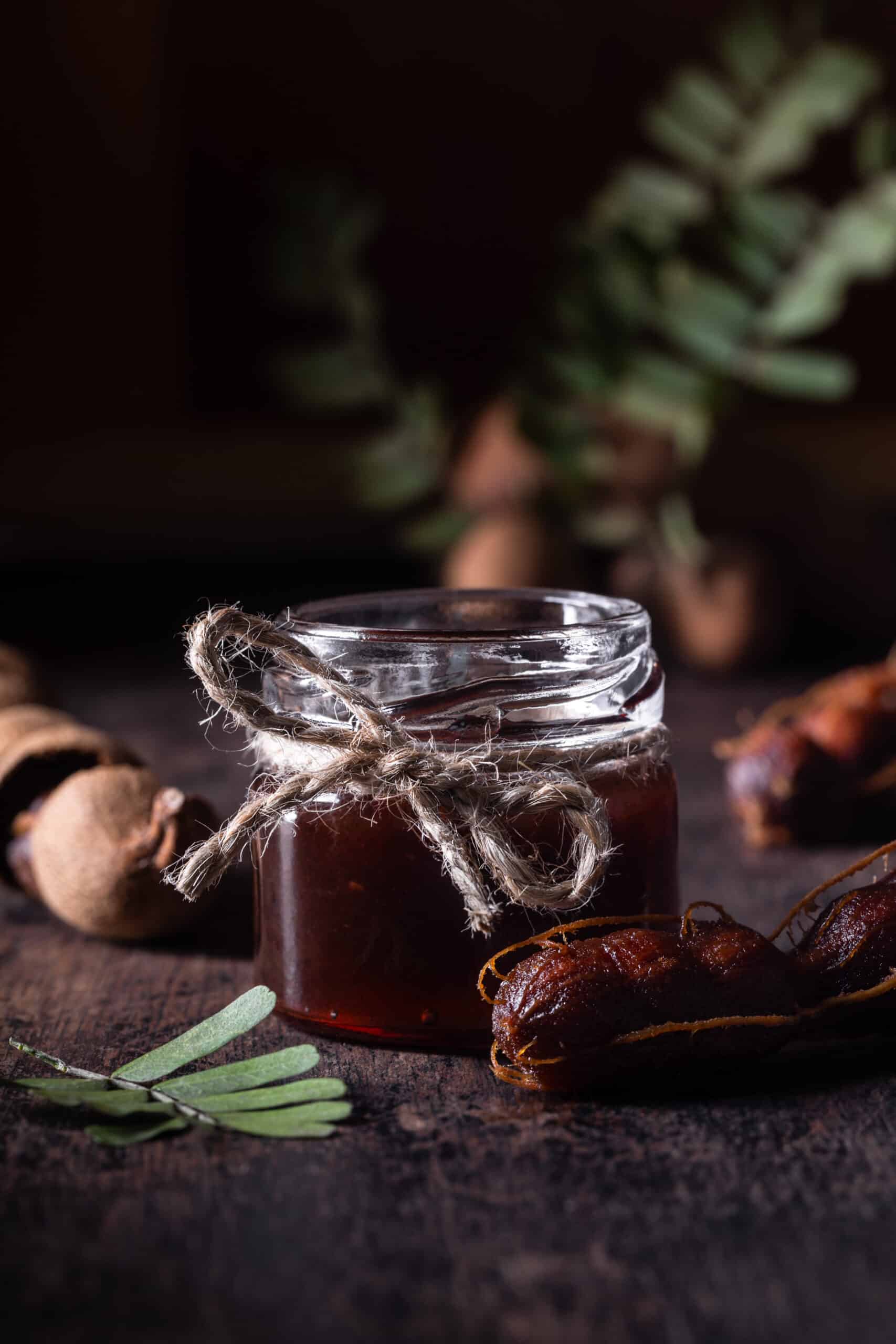
Uses of Tamarind Sauce
Tamarind sauce is thick, sticky, and looks like molasses. And the taste profile ranges from sweet and sour to a tangy and tart flavor, often relying on other ingredients it’s mixed. For instance, sweet ingredients, like sugar, can change the sour direction of tamarind flavors. The tamarind’s taste depends on how ripe the fruit is, as the less ripe it is, the more sour the final taste of tamarind sauce. As it matures and ripens, tamarinds get sweeter. It does have hints of smoke and caramel, making for a complex flavor profile.
It’s also a staple in many Asian dishes, including noodle recipes, curries, sauces, and soups. And it can be added to uncooked dips and chutneys. It’s also effective in a marinade since its acidic nature helps to tenderize the meat. Also, tamarind sauce is present in desserts, candies, cocktails, and other beverages, such as the very popular and well-loved agua fresca de tamarindo in Mexico.
Other spices often mixed with tamarind sauce include ginger, turmeric, coriander, and garam masala. It’s also a part of other sauces mixed with fish sauce, sugar, and vinegar. You’ll find that it’s a staple part of the base sauce used to make pad Thai. Plus, it has many health benefits, including ample levels of vitamin C, can reduce fevers and high acidity, and helps regulate body temperatures in the hot equatorial climates where it’s grown.
Tamarind sauce is sold in jars or plastic containers. One jar will last long since the sauce is strong and condensed. And it’s added to recipes as a key ingredient, some of which are;
- Tamarind Aubergine with Black Rice
- Prawn Curry
- Apple, Date, and Tamarind Chutney
- Tamarind Squash and Halloumi Skewers
- Nasi Lemak
- Sweet Potato and Corn Cakes with Tamarind Bacon
- Spicy Tamarind Prawns
- Tomato and Tamarind Fish Curry
- Seared Beef and Papaya Salad with Tamarind Soy Dressing
- Indian Spiced Salmon
- Khatti Dhal
- Crab Curry
- Prawn and Pomelo Salad
- Chicken Tikka Burgers
- Ayam Kapitan
Substitutes for Tamarind Sauce
If you ever run out of tamarind sauce, don’t worry. These substitutes below will save you the need to rush off to the grocery store in a frenzy. And while they may not all work as perfectly as the real thing, they’ll still help fill the flavor void expected from the ingredient.
Tamarind Pulp
If you can get a store that sells tamarind pulp, you can make an authentic paste. Try to get your hands on a pulp that’s without seeds. If you use a pulp with seeds, you’ll need to get rid of the seeds and separate the pulp as you make the paste. Mix two tablespoons of tamarind pulp with half a cup of warm water and let the pulp soak until soft. Then, rub the pulp through your hands to make a paste. If the pulp still has seeds, remove them at this stage. And once the pulp looks more like a paste, strain out the water.
Amchur Powder
This is another considerable alternative to tamarind sauce. This powder is the product of unripe mangoes, and it’s a popular ingredient in the Northern part of India. It brings fruity, acidic, and sour flavors similar to tamarind sauce. Amchur powder is aromatic and works well as a tamarind sauce substitute in Indian cuisine. To get a pasty consistency, combine equal parts of water and powder before using them in your cooking. This amchur paste should be used in equal quantities to tamarind sauce.
Dried Fruits and Lemon Juice
Another way to replace tamarind sauce is with dried fruits. The first step is to mix equal parts of chopped prunes, dates, apricots, and lemon juice, then pour into a small water bowl. Place a lid on the bowl and leave the fruit softened for 20-30 minutes before draining the water. Lastly, blend the fruit and use it in equal proportions as tamarind sauce.
The texture of these fruits is close to tamarind, but you won’t quite get the same burst of tartness from the original ingredient. However, raisins and lemon juice can also be used in prunes, dates, and apricots.
Worcestershire Sauce
We already know that tamarind sauce is sometimes used in Worcestershire sauce, so it’s a very good beginning. But you’ll still need to mix it with some additional ingredients to make it work. So, combine three tablespoons of Worcestershire sauce with three tablespoons of lemon juice, two tablespoons of water and brown sugar, and half a cup of tomato paste. Endeavor to use fresh lemon juice instead of the bottled ones as it has better flavor. And you can substitute the lemon juice with lime or apple cider vinegar if that’s what you have.
Lime Juice and Brown Sugar
This substitute is an appealing choice for many as readily available ingredients. Lime juice hints at tartness while the sugar brings some sweet balance. Though you may not get the same flavor as tamarind sauce, most people won’t even tell the difference in some dishes.
You can use this lime and brown sugar mixture in equal quantities as tamarind sauce in your dishes. If the recipe requires one tablespoon of tamarind sauce, use equal quantities of this backup mixture.
Frequently Asked Questions (FAQs)
What is similar to tamarind sauce?
Besides the options listed above, you can also try pomegranate molasses, rice vinegar, and marmalade. They may not work perfectly, but they’ll do well when you’re in a pinch.
Are tamarind sauce and paste the same thing?
The main difference lies in their consistency. Tamarind sauce has a more fluid form, like a dipping sauce, while the paste has a somewhat solid consistency. Also, tamarind sauce is prepared from the dried form of the fruit.
Is tamarind sauce healthy?
Tamarind sauce is rich in flavonoids and polyphenols linked to heart health. These compounds are renowned for reducing LDL cholesterol while increasing HDL cholesterol in the blood. It’s also suggested that the pulp from which the sauce is made offers anti-hypertensive effects and can reduce diastolic blood pressure.
Conclusion
Tamarind sauce is a versatile and unique condiment that goes well in dishes when used appropriately. This ingredient has a flavor profile that says “distinct and different.” It’s easy to get accustomed to it and love the feeling you get from it. So, you might want to panic if you can’t find it at your grocery store, don’t have it in your ingredient rack, or don’t have enough. Well, here you’ve discovered other effective ways to achieve your tamarind sauce feeling in your recipes.
